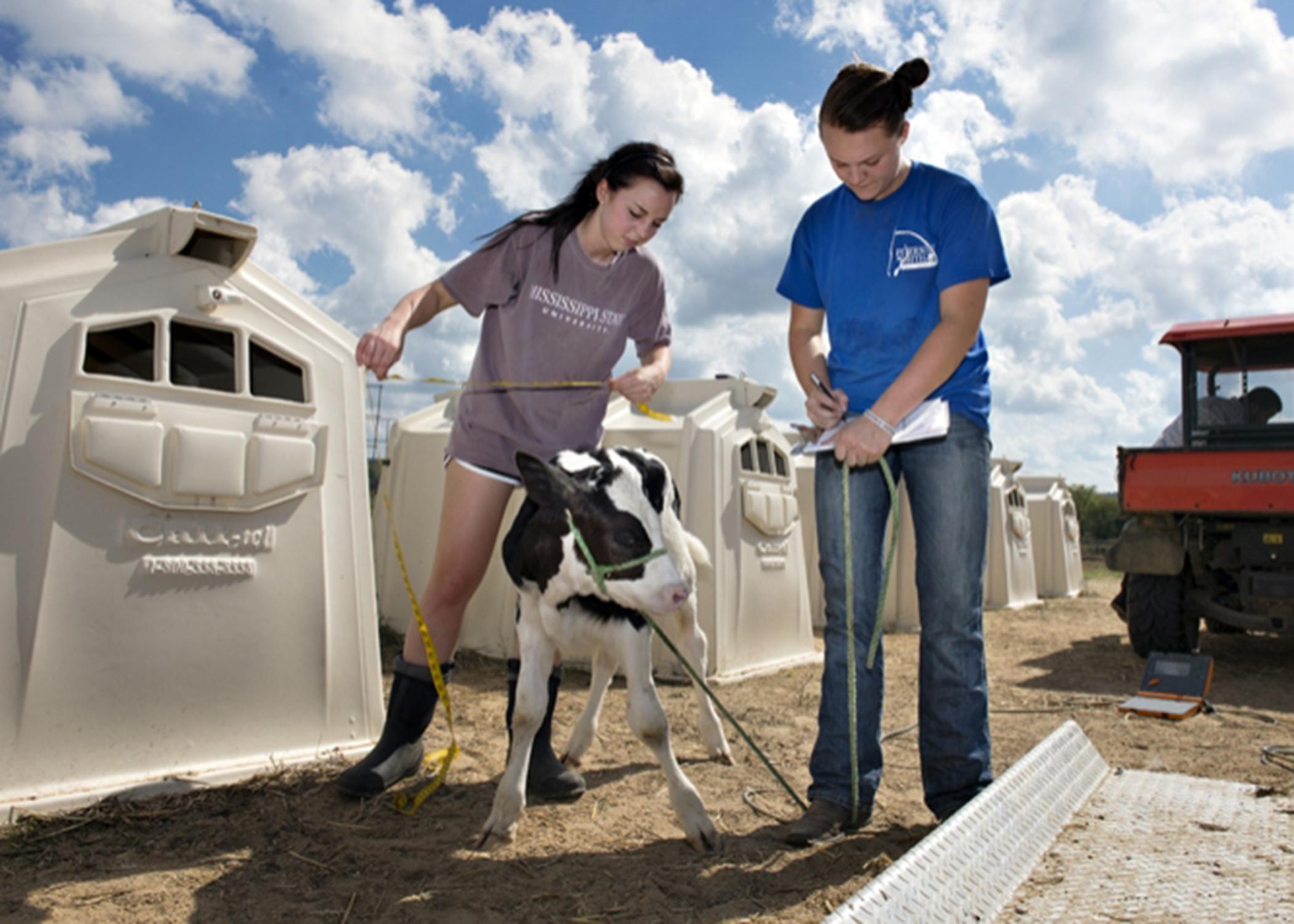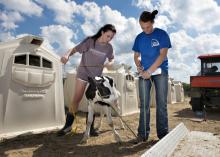Information Possibly Outdated
The information presented on this page was originally released on August 5, 2014. It may not be outdated, but please search our site for more current information. If you plan to quote or reference this information in a publication, please check with the Extension specialist or author before proceeding.
Research suggests buddy system helps dairy calves develop
MISSISSIPPI STATE -- Everyone needs friends to improve their quality of life, even dairy calves.
In a study on the effects of housing types, Mississippi State University scientists found that dairy calves develop better when raised in pairs. Stephanie Ward, a dairy management and nutrition scientist in the MSU-based Mississippi Agricultural and Forestry Experiment Station, said this research should provide insight for dairy farmers who practice grass-based dairying.
“Many dairy producers in the Southeast are moving towards grass-based dairying,” Ward said. “As a result, farmers often group house calves. Understanding the impact of housing on calf-to-calf interaction, feed intake and health is crucial.”
Karley Parker worked on the study during her last semester as an MSU undergraduate majoring in animal and dairy sciences. Upon graduation in May, Parker began classes in the university’s College of Veterinary Medicine.
“Our calves that were paired actually had better respiratory scores than the calves that were housed individually. In the dairy industry, it’s often thought that housing calves together increases risk for infection,” Parker said.
Housing type also had a positive effect on feed intake, and calves that were paired took less time to find feed when they were weaned into larger groups.
Parker’s undergraduate research project looked at calves from birth to week 10. Researchers collected growth data, which included heart girth, wither girth, body weight and length, and hip width and height. They also assessed respiratory and fecal health scores during this time.
Researchers studied behavior scores at three, five and seven weeks from birth. At week eight, they studied how long it took the calves to find feed and eat after they were returned to the open pen with other calves.
The study also examined feeding frequency. While it impacted post-weaning growth rates, it had no impact on calf interaction, feed intake or calf health.
Ward said animal behavior studies are a growing area of interest as consumers become more concerned with the source and treatment of animals producing their food. This data was presented at the national meeting of the American Dairy Science Association in July and was included in a critical animal research and Extension grant proposal. Experiment Station scientists are also exploring collaborations with colleagues at Virginia Tech and in Canada for further research.




